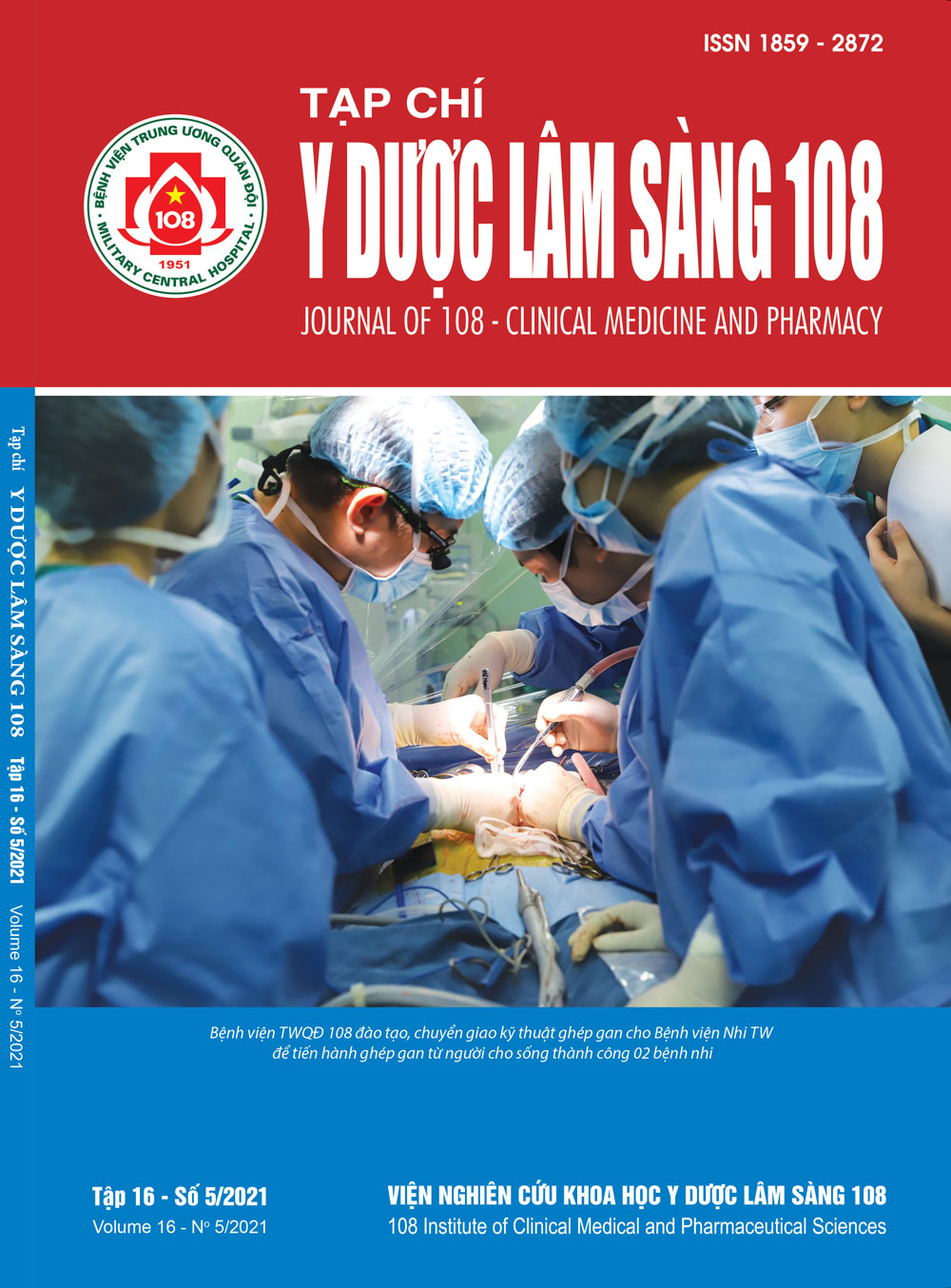Serum adiponectin and leptin levels of plaque psoriasis patients in Ho Chi Minh City Hospital of Dermatology and Venereology
Main Article Content
Keywords
Abstract
Objective: To evaluate of serum adiponectin, leptin levels and related factors in plaque psoriasis patients and controls at Ho Chi Minh City Dermatology Hospital. Subject and method: 48 cases of plaque psoriasis and 48 healthy people at Ho Chi Minh City Dermatology Hospital. Plaque psoriasis is diagnosed based on clinical manifestation and severity is calculated based on PASI score. Adiponectin level was measured by immunoturbidimetric assay and leptin was measured by sandwich ELISA. Result: The median of serum adiponectin level in the patient group was 4.27 (2.68 - 6.38) μg/ml lower than which of the control group was 5.39 (3.66 - 7.98) μg/ml, p=0.036. In the female subgroup, the serum adiponectin level of the patient group was 5.44 (3.84 - 6.64) μg/ml, that was also lower than that of the control group which was 7.02 (4.83 - 10.4) μg/ml (p=0.016). There was no statistically significant difference in serum leptin level in the psoriatic group and the control group (p=0.985). Serum leptin level was related to PASI severtity. Conclusion: The serum adiponectin level in the patient group was statistically significant lower than the control group, in general and in the female subgroup. There was no difference in leptin concentration between the disease group and the control group. Serum leptin concentration of psoriatic patients was related to PASI severity.
Article Details
References
2. Lynch M, Ahern T, Sweeney CM et al (2017) Adipokines, psoriasis, systemic inflammation, and endothelial dysfunction. International journal of dermatology 56(11): 1103-1118.
3. Acar EM, İlter N, and Elbeg S (2019) Association of leptin, resistin, and high-molecular-weight adiponectin levels with psoriasis area and severity index scores, obesity, and insulin resistance in psoriasis patients. Dermatologica Sinica 37(1): 33-39.
4. Rodríguez-Cerdeira C, Cordeiro-Rodríguez M, Carnero-Gregorio M et al (2019) Biomarkers of inflammation in obesity-psoriatic patients. Mediators of inflammation 2019: 1-14.
5. Coimbra S, Oliveira H, Reis F et al (2010) Circulating adipokine levels in Portuguese patients with psoriasis vulgaris according to body mass index, severity and therapy. J Eur Acad Dermatol Venereol 24(12): 1386-1394.
6. Burden AD, Kirby B (2016) Psoriasis and related disorders. Rook's Textbook of Dermatology, Wiley Blackwell, United States.
7. Bavoso NC, Pinto JM, Soares MMS et al (2019) Psoriasis in obesity: Comparison of serum levels of leptin and adiponectin in obese subjects-cases and controls. Anais brasileiros de dermatologia 94(2): 192-197.
8. Langley RG, Krueger GG, and Griffiths CE (2005) Psoriasis: Epidemiology, clinical features, and quality of life. Ann Rheum Dis 64(2): 18-23; discussion 24-25.
9. Mahyoodeen NG, Crowther NJ, Pillay L et al (2019) Relationship of visceral fat and adipokines with cardiometabolic diseases in psoriasis. Acta Dermato-Venereologica 99(13): 1218-1223.
10. Cerman AA, Bozkurt S, Sav A et al (2008) Serum leptin levels, skin leptin and leptin receptor expression in psoriasis. Br J Dermatol 159(4): 820-826.
 ISSN: 1859 - 2872
ISSN: 1859 - 2872
